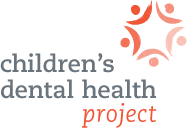The Children's Dental Health Project's blog
Three reasons why we shouldn’t expand short-term health plans
UPDATE: On August 1, 2018, the U.S. Department of Health and Human Services finalized a rule rolling back regulations on short-term health plans. New federal policy allows short-term coverage to extend for one year and renewed for up to 3 years. This is a stark change from the previous 3-month limit. While CDHP is fully reviewing the regulation, we remain concerned that it jeopardizes families’ economic security and oral health. Short-term plans are not required to cover pediatric dental coverage or any other Essential Health Benefit guaranteed by the Affordable Care Act.
Congress has been unable to repeal the Affordable Care Act (ACA), but the administration has continued its efforts to undermine the law through the regulatory process.
Over the past few months, CDHP has responded to federal proposals to weaken the ACA's benefit standards and consumer safeguards both for small group and individual insurance options like those sold on state health insurance marketplaces as well as Association Health Plans. In addition, the administration continues to encourage and approve many state-level requests that would push Medicaid coverage out of reach for individuals and families who are struggling to make ends meet.
At the end of April, the Children’s Dental Health Project (CDHP) and six partner organizations shared concerns about yet another proposed rule, one that would expand the use of short-term, limited duration insurance (STLDI) plans. Currently, STLDI plans are designed to be minimal and temporary coverage options. For example, a person might enroll in a short-term plan while waiting for employer-sponsored coverage to begin at a new job. Given their skinny design, federal regulators established rules to ensure consumers could only use them for three months at a time.
Here are three of the many reasons why this proposal would particularly risk children’s and families’ oral health and family economic security:
1. No guarantee of pediatric dental coverage or other Essential Health Benefits:
Access to coverage is among the first steps toward ensuring that children and families can get the care they need to prevent or manage the disease that causes tooth decay. Making coverage more meaningful, the ACA guarantees coverage of ten categories of services known as Essential Health Benefits (EHBs). Prior to the ACA, health plans often excluded several of these benefits. Thankfully, EHBs include coverage for pediatric dental insurance – a benefit that has helped more children gain oral health coverage.
Short-term plans plans would fail to ensure children’s oral health coverage and exclude other essential benefits that are critical to families’ overall health.
Short-term plans have been exempt from these EHB requirements. Many plans today don’t cover any dental services beyond emergency treatment. The proposed rule would maintain the EHB exemption. STLDI plans would fail to ensure children’s oral health coverage and exclude other essential benefits that are critical to families’ overall health. Reducing the quality of insurance for parents and caregivers would have harmful spillover effects to their children; research shows that kids are less likely to obtain needed care if their parents lack health coverage.
2. No protections to preserve consumers’ economic security or guard against discrimination:
In addition to being exempt from providing Essential Health Benefits, STLDI plans would be free to disregard other consumer protections — risking individuals’ and families’ economic security. While the insurance system is still imperfect, the ACA instituted safeguards to protect consumers’ financial security. For example, the law limited out of pocket costs and ended annual or lifetime dollar caps on coverage. The ACA also ended discriminatory insurance practices that impact a person’s economic security, like denying coverage to individuals with pre-existing conditions or gender rating (charging women more than men for the same coverage).
STLDI plans would not be required to uphold these protections. For many families, affordability remains a barrier to accessing oral health care. Ignoring the ACA’s consumer safeguards, short-term plans would expose families to additional financial burdens, placing dental services even further out of their reach.
3. Less transparency and more confusion for consumers seeking coverage:
Today, a distinguishing factor between STLDI and ACA-compliant plans is that a short-term policy is limited to three months and cannot be immediately renewed. The proposed rule would roll back both of these restrictions, removing transparency and clarity for families. It would increase the lifespan of a short-term plan to nearly a full year — specifically, 364 days. The rule would also permit and make it easier for individuals and families to renew this coverage, streamlining the application process. On their own, both of these changes would make it more difficult for consumers to differentiate between short-term plans and ACA-compliant insurance.
Another complicating factor could threaten families’ health and coverage status, unbeknownst to them. During the reapplication process, insurers could use a health problem that arose during the previous coverage period as grounds for new benefit denials. This could occur without adequately informing the family seeking renewed insurance. If the plan denies the renewal altogether, a family might be forced to go without insurance until the next marketplace enrollment period; losing a short-term health plan is not among the qualifying circumstances to sign up outside open enrollment. These changes would endanger unwitting families, risking their children’s dental insurance and, possibly, coverage for their entire household.
CDHP will continue to follow this and similar federal actions that would undermine consumer protections and their oral health benefits. We will remain vigilant as new rules are proposed, urging the administration to safeguard — rather than erode — access to quality coverage for all children and families.
Read the full set of comments CDHP submitted with six partner groups by clicking here.
